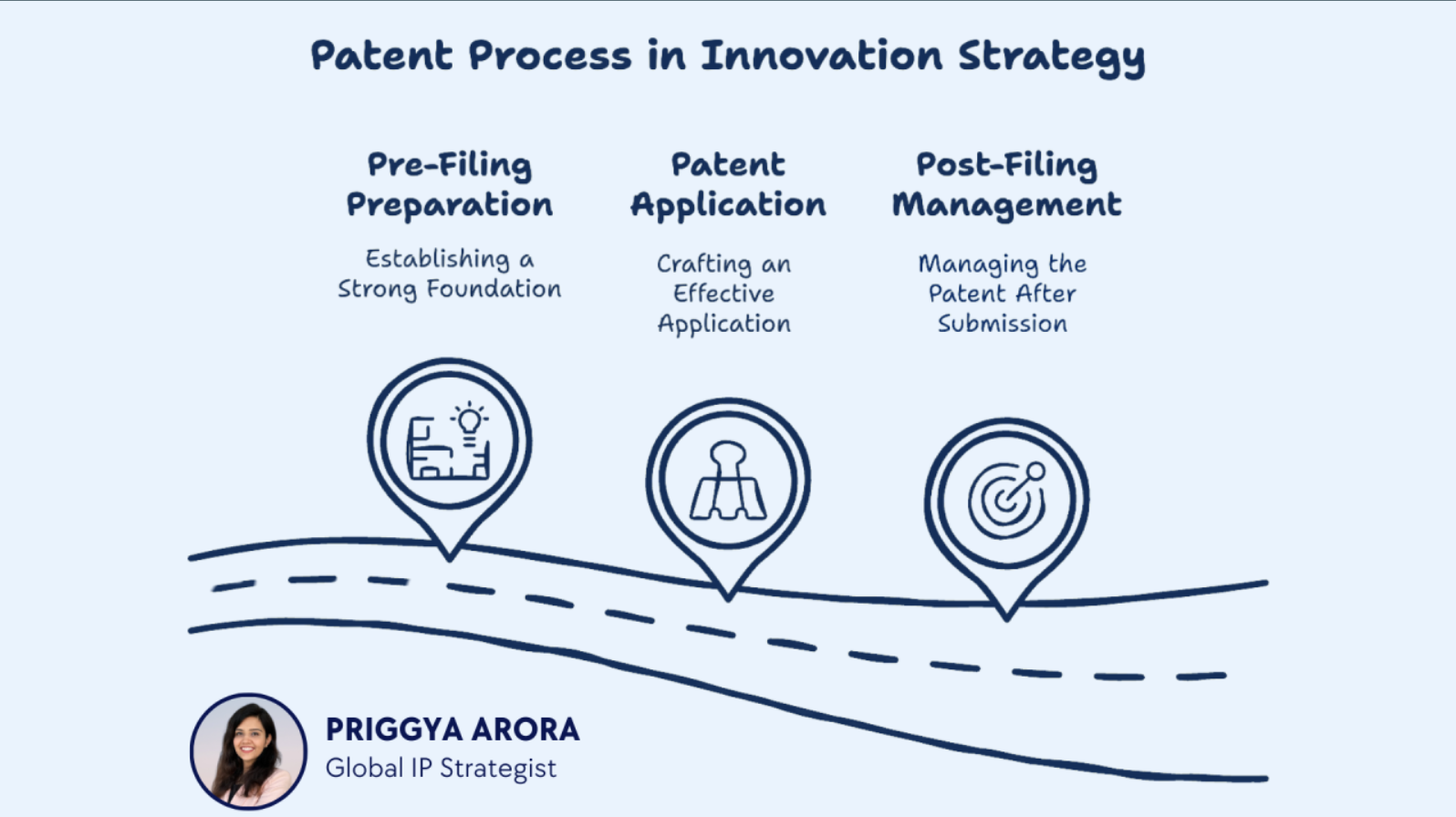In my experience, many inventors come to me excited to get a “patent pending” status for their invention. Perhaps they’ve heard the term and think it’s a badge of innovation. While “patent pending” is undoubtedly valuable, it’s not a starting point—it’s a milestone on a much longer innovation journey.
A good patent strategy begins long before filing a patent and continues long after the “patent pending” status is achieved.
Here’s what inventors and entrepreneurs need to consider at every stage of the patent process:
1. Pre-Filing Preparation: Laying the Strong Foundation
Thorough preparation should be the focus before filing. This stage determines the success of your patent journey.
- Conduct a Patentability Search: Ensure your invention is truly novel—research existing patents to avoid wasting time and resources on something already patented.
- Refine Your Idea: Work on technical and commercial aspects of your invention. Ensure it solves a real problem and has market potential.
- Create a Strong Disclosure: Document every detail of your invention. Include variations and potential applications—it’s the backbone of your patent.
- Evaluate Business Goals: Decide how the patent aligns with your business strategy. Are you seeking to license, manufacture, or protect market share?
- Maintain Confidentiality: Avoid publicly disclosing your invention before applying. Premature disclosure could lead to a loss of rights.
2. Filing a Patent: Crafting an Effective Application
This is where the “patent pending” status comes into play, but filing isn’t just about paperwork—it’s a strategic move.
- Draft an Effective Patent Application: Ensure your claims are strong and comprehensive. Poorly drafted patents are vulnerable to rejection from the Patent Office.
- File Provisional or Complete Application Strategically: A provisional application provides “patent pending” status and buys time to refine your invention, but it’s only a placeholder. A complete/ non-provisional application secures substantive rights.
3. Post-filing Management: Beyond ‘Patent Pending’
The journey doesn’t end with a “patent pending” label. To make the most of your invention, focus on what happens next.
- Monitor the Patent Process: Track the examination process and respond promptly to office actions or objections.
- Develop a Commercialization Plan: Identify ways to monetize your invention. This could include licensing, manufacturing, or selling the patent.
- Expand Protection: Consider filing for international patents if your invention has global potential.
- Enforce and Defend Your Patent: Be vigilant about potential infringements and enforce your rights when necessary.
A Comprehensive Strategy Wins the Innovation Game
Relying solely on “patent pending” status is like putting a sign on a house you haven’t fully built yet. It might look impressive, but it doesn’t provide the structural strength your invention needs in the competitive market.
A robust IP strategy spans from pre-filing research to post-grant enforcement, ensuring that your invention is not only protected but also positioned for long-term success.
So, the next time you think about a “patent pending” status, remember: it’s not the destination—it’s just a stop along the way.
What’s your approach to building an effective patent strategy? Let’s discuss in the comments!
Thank you for reading our blog! We’d love to hear from you! 
- Are you Interested in IP facts?
- Would you like to know more about how IP affects everyday lives?
- Have any questions or topics you’d like us to cover?
Send us your thoughts at info@thepalaw.com. We’d love to hear your thoughts!
